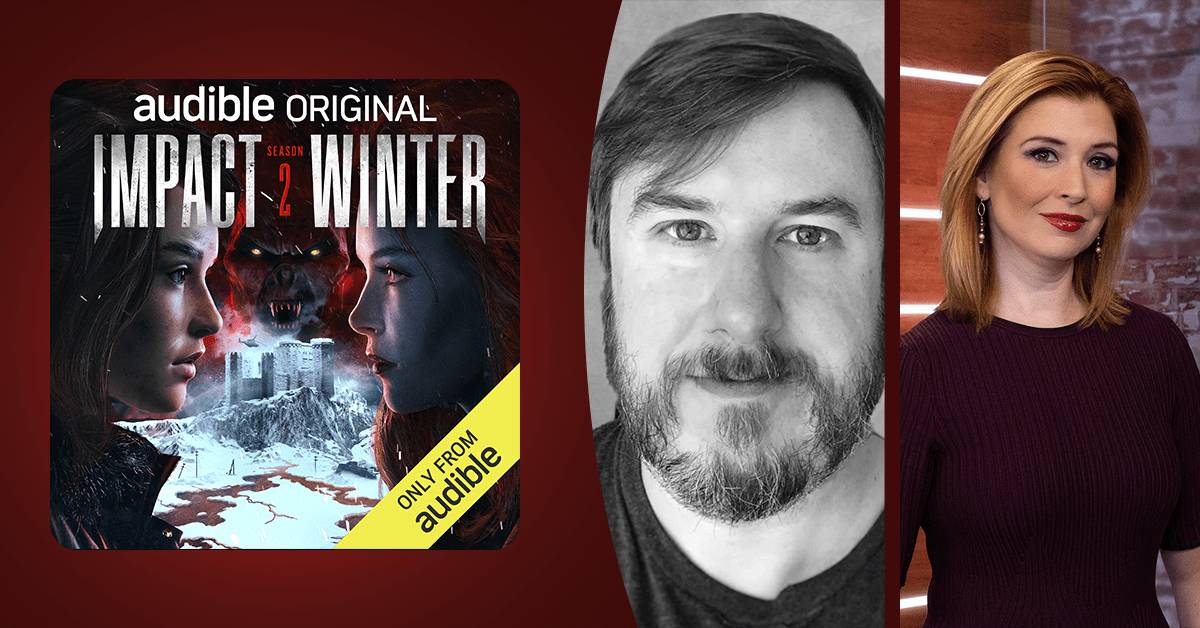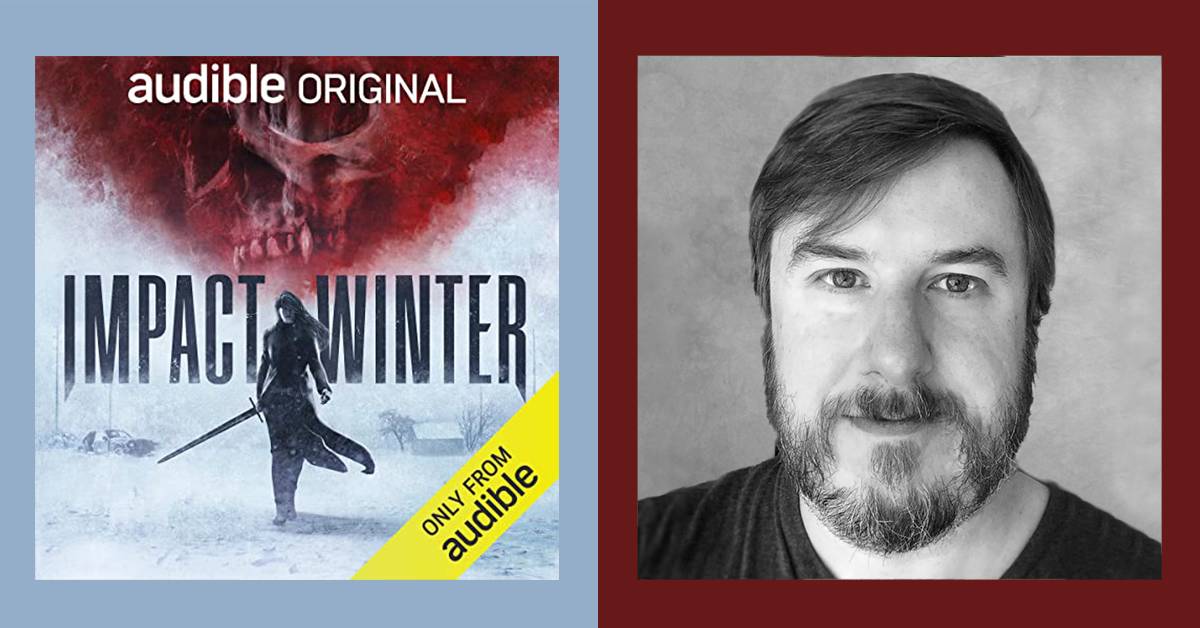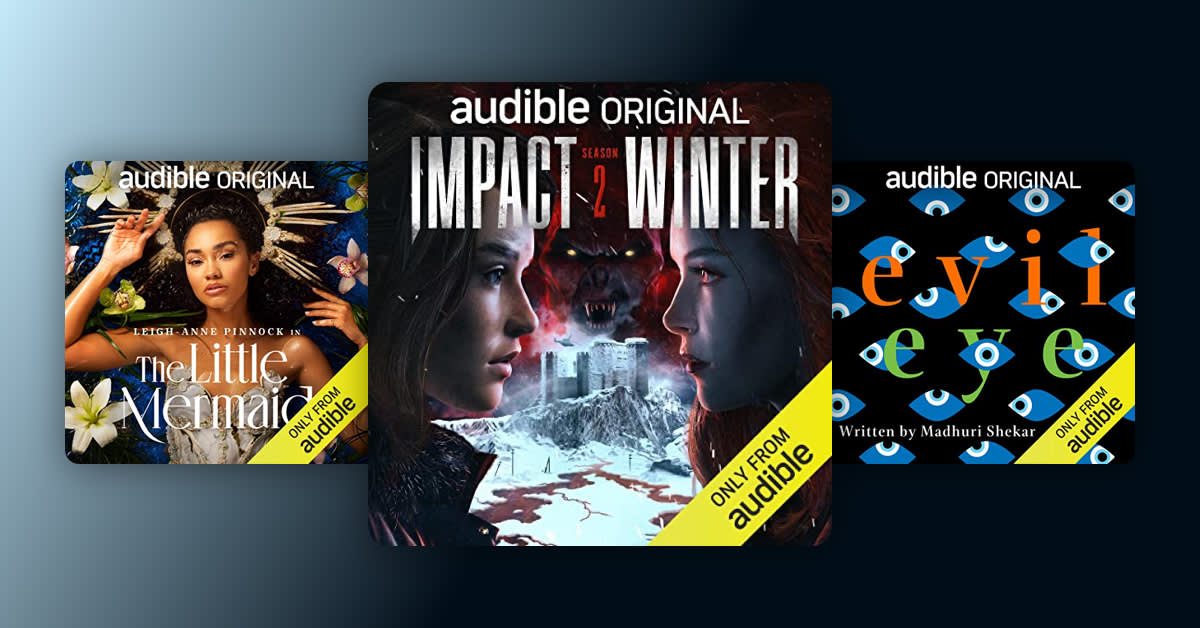The world of the Audible Original podcast series Impact Winter is bleak. Following a comet strike, the sun has been blotted out, leading to a grim, unforgiving terrain that makes the perfect home for a foe that thrives in the darkness. The sounds of this landscape play an important role in the story—from the howling winds to the crunching of snow underfoot, every detail sets the stage and adds to the drama.
With the release of Impact Winter: Season 2, we wanted to know more about the inspiration and research that goes into this world-building, and who better to ask than series creator Travis Beacham alongside professional meteorologist Danielle Banks? The Audible Editors and The Weather Channel (TWC) teamed up for this interview with the two of them.
Audible & TWC: Since Impact Winter is an audio production, we obviously can’t see the snow or bleak landscape you might have had in mind while writing it. How did you bring the sounds of the weather to life?
Travis Beacham: I thought quite a lot about it. The weather is not only integral to the premise, but it informs the immersion. It was always important to me that none of it sounded booth-y and clean but was bristling with life and ambiance. And actually, the funny thing about a show called Impact Winter is that it’s not always snowy in this world.
The way I pictured it was that there’d still be seasons, to some muted extent. Yes, it’s always overcast and always cooler than it would normally be, but the axial tilt of the globe would still contribute to some fluctuation over the course of a year, and so even under the blanket of a reduced overall temperature, one end of the calendar would still be relatively warmer than the other. So, if you listen, you’ll notice that the ambient weather and textures underfoot reflect the stated in-story date of any given episode. So, you’ll definitely hear more crunchy snow and ice in the colder months and more mud and grit and rain in the warmer months. And whether you consciously clock it or not, I do think that attention to detail is part of what makes it feel real to the listener.
What was your inspiration for the world of Impact Winter? Did you start with the setting, the vampires?
Travis Beacham: I feel like the setting and the vampires happened pretty close together, in so far as we’re talking about a post-impact world. The jump from “no sunlight” to vampires was maybe like a millimeter in my brain. Specifically, County Devon came a bit later. I think as I fleshed it out, I was just really drawn to the idea of an Old World setting, and something about the somber and majestic moorland of Southwest England just made all the sense in the world as a place where the gloom of a comet impact might mingle with creatures from folklore. Then you’re thinking castles and decommissioned air raid shelters, and it all starts to really come together.
What did your research journey look like for the setting of Impact Winter? How loyal did you feel like you had to be to the science, and where did you take some creative license?
Travis Beacham: For me, a lot of the fun of the idea actually was in mashing up the natural and supernatural. In terms of research, I was lucky to have a conversational knowledge and a sagging shelf of books accumulated from a lifelong interest in both space and paleontology. But ultimately, I’m a storyteller, and the needs of the story need to take a front seat.
Fortunately, we’re talking about an event of a scale that’s kind of unprecedented in recorded human history, and thereby cloaked in some forgiving ambiguity. Yes, you have the eruption of Mount Tambora that famously made 1816 a Year Without a Summer, but this impact is something much larger and perhaps closer in size to the impact that killed the dinosaurs. Not quite that big, but big enough to leave some room to play around in.
Danielle, we know you are a huge fan of how weather is depicted in the entertainment industry. What do you think about the role of weather in a project like Impact Winter?
Danielle Banks: As a meteorologist, I love it when storytelling starts with the weather. It really sets the stage for everything. Around here, we talk about how weather is the original influencer. Introducing more weather sounds into spatial audio projects like Impact Winter gives the listener a better feel for what the characters are dealing with. It’s an immersive experience—as you hear the wind whistling and the snow crunching under their feet as they walk, it makes you feel like you are right there in the story. I greatly appreciate the artistry and attention to detail created by the sound effects team that worked on this project. Spatial audio makes listening more fun, and the “weather sounds” they created are spot on.
Do you think weather adds to the drama in a series like Impact Winter?
Danielle Banks: Absolutely. Weather sets the tone for the day and also affects our moods. Any weather extreme can be hard on our bodies. Cold temperatures can hurt your hands, be stressful on your joints, chap your skin, or make it harder to breathe. It’d certainly make it harder to run away from things like vampires that are coming after you! I also imagine a vampire could take anyone by surprise if the weather goes downhill, so I could see where a forecast for whiteout conditions would make the day terrifying. Luckily, I don’t foresee having to present a “Here’s your running from vampires” forecast.






